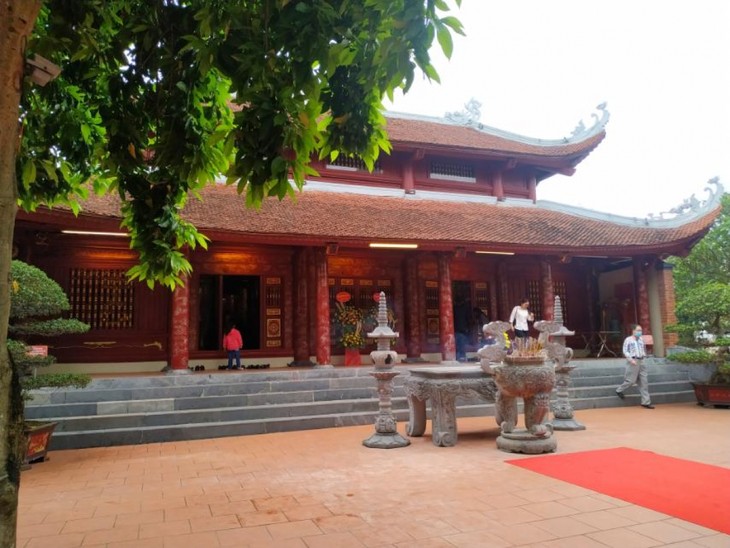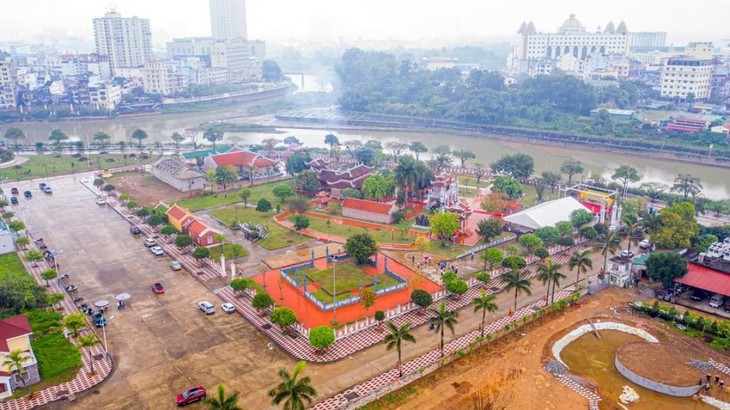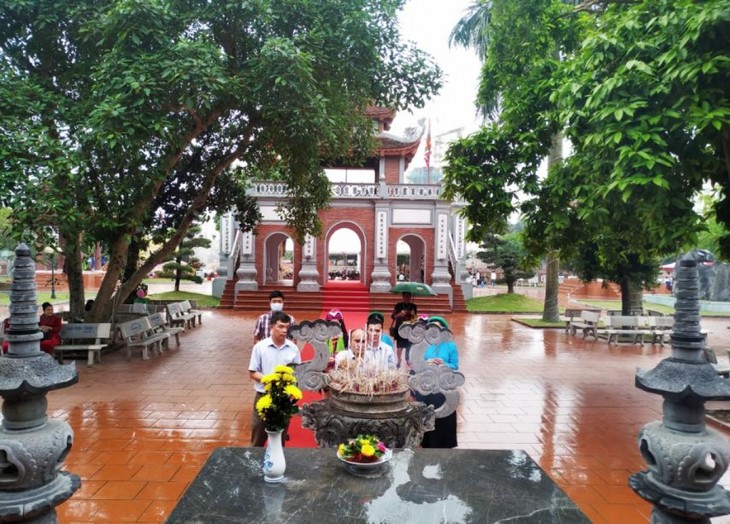(VOVWORLD) - Xa Tac temple is located on the bank of Ka Long river which is the natural border between Vietnam and China in Mong Cai city, Quang Ninh province. The centuries-old temple has been officially recognized as national relic by the Ministry of Culture, Sports, and Tourism.
Ancient stone steles and ancestral tablets state that Xa Tac temple was constructed in the late 13th and early 14th century during the Tran dynasty to worship a Land Genie and those who originally claimed this area, who now protect the local people and bless them with bumper crops. The south-facing temple encompasses three chambers tiled with a yin-yang roof made of alternating rows of concave and convex tiles. The temple has undergone numerous restorations, the latest in 1989.
 Xa Tac temple in Mong Cai city, Quang Ninh province (Photo: VOV) Xa Tac temple in Mong Cai city, Quang Ninh province (Photo: VOV) |
70-year-old Bui Huu Thiem, a local resident, said, “The temple was wrecked by time and by wars. Local people asked for it to be restored. It’s our source of pride. We feel responsible for preserving it because it is both a religious venue and a border marker.”
The two-storey Xa Tac temple was expanded to span 20,000 square meters on a high spot, secluded from the busy city. It features eight tiled roofs decorated with carved patterns. Xa Tac temple has three steles dating back to 1879, engraved with the names of its constructors and donors. In 2005, the temple was recognized as a provincial cultural and historical relic. In 2018, Xa Tac temple’s worshiping ritual was recreated for the first time in Mong Cai city.
Tran Dinh Thanh, Deputy Director of the Cultural Heritage Department of the Ministry of Culture, Sports, and Tourism, said, “The Xa Tac temple in Mong Cai city is one of the few surviving Xa Tac temples in Vietnam. It is an important relic representing the traditional culture and beliefs of ancient Vietnamese people who relied on agriculture. Its location makes its an important border marker.”
 Xa Tac temple is secluded from the city. (Photo: VOV) Xa Tac temple is secluded from the city. (Photo: VOV) |
The Xa Tac temple in Mong Cai city was built to worship local genies, but has become a place to worship the genies who govern the whole country.
All the pagodas and temples in Mong Cai are included in a spiritual tour which also includes Tra Co beach, the Po Hen martyrs’ monument, the Mong Cai International Border Gate, and the site where the first Party cell in Mong Cai was established.
Ho Quang Huy, Chairman of the Mong Cai municipal People’s Committee, told VOV, “We will continue collecting materials to give our relics the recognition they deserve. We are mobilizing resources for relic preservation and spiritual tourism development.”
 (Photo: VOV) (Photo: VOV) |
Mong Cai city is on its way to becoming a major economic hub in Vietnam’s northeastern region, judging from the number of plans approved by the Prime Minister. Xa Tac temple and other historic spots will contribute to that goal.